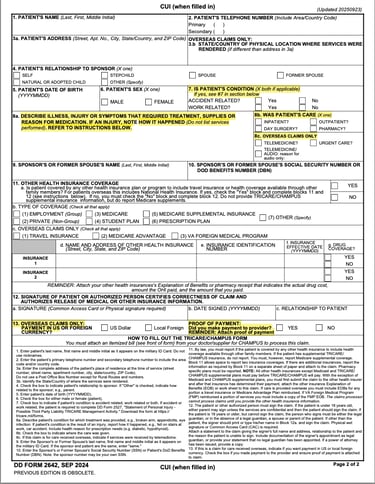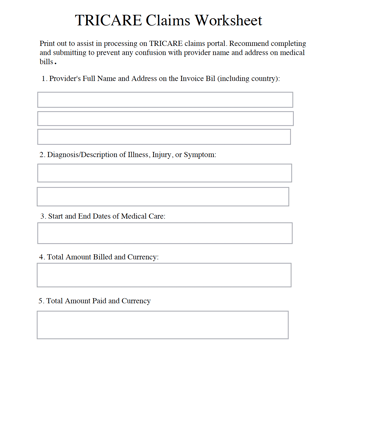Understanding Italian Healthcare Differences
There are some fundamental aspects of Italian healthcare, including its unique structure, accessibility, and the essential differences that set it apart from other healthcare systems.


Italian Healthcare
The Italian state has run a universal public healthcare system since 1978 and is ranked as one of the top world-wide. Italian healthcare relies heavily on local intermediary clinics. However, there are some very evident cultural differences. Getting familiar with your closest medical treatment facility and visiting before an illness or emergency can't be overemphasized, see the button for finding local healthcare and see their ratings.
For urgent health in the Province of Pordenone there are a number of options, depending on where you live, before an emergency, download the Emergenza FVG app so you know your options and understand how it works.
For expats, immigrants, retirees who are residents of Italy, you can register for the Italian healthcare (Servizio Sanitario Nazionale - SSN) and select a general practitioner (medico di base) and schedule appointments directly. Voluntary registration fee (based on income or fixed regional rates).In Friuli Venezia Giulia, retirees often pay between €1,500–€2,000/year per person (subject to regional updates and confirmation).

Italian Healthcare Differences
When comparing American and Italian healthcare experiences apart from cost, there are some meaningful differences in patient expectations, communication, structure, and culture of care.
1. Doctor-Patient Communication Style
🇮🇹 Italian doctors tend to be more direct and authoritative, especially in public clinics. The interaction may feel more formal, with fewer details unless you ask specific questions.
🇺🇸 U.S. doctors often use a collaborative and customer-oriented approach, explaining options, risks, and inviting the patient into decision-making.
Expectation difference: U.S. patients expect thorough explanations and shared decision-making. In Italy, patients may be expected to defer more to the doctor’s judgment.






2. Time Spent with Patients
🇮🇹 Italian public doctors may see many patients in rapid succession, especially in hospitals or “cup” clinics if they are enrolled Servizio Sanitario Nazionale. Appointments may be very brief (5–10 minutes) unless it’s a private specialist. However, if you have American health insurance as a private patient (paziente privato), you can usually book directly with an ENT, pulmonologist, dermatologist, etc., without long referral chains.
🇺🇸 U.S. appointments are often 15–30 minutes, with structured time for questions, notes, and follow-up plans.
Expectation difference: American patients may expect more time and follow-up, while Italian patients may need to be proactive to get more detailed attention.
3. How Patients Are Received & Friendliness
🇺🇸 United States – Reception staff and nurses often adopt a welcoming, service-oriented attitude, reflecting the “patient as customer” model. Small talk and friendliness are common during check-in and consultations.
🇮🇹 Italy – Reception and medical staff, especially in the public system, may be brisk and businesslike. Friendliness grows with familiarity, but the initial focus is on processing the patient efficiently rather than building rapport right away.
4. State & Emphasis on Medical Facilities
🇺🇸 United States – Medical facilities are often highly modern, with a strong emphasis on technology, patient comfort, and specialized centers. Private rooms, advanced imaging, and rapid access to diagnostics are common, especially in urban or military settings.
🇮🇹 Italy – Public hospitals may vary in modernity; larger city hospitals and private clinics are often well-equipped, but some local facilities can feel more basic. The emphasis is on delivering essential care efficiently rather than maximizing patient amenities.
A Better Way: TRICARE Claims Process, Three Enhancements
(Prefilled Template, TRICARE Claims Worksheet, Combined PDF File)
Filing your TRICARE claim can be complicated (The claims form DD 2642 has certain information, the medical bills have different information, and the TRICARE Claims portal asks for other information. Here’s a streamlined, system-friendly process that works on both Mac and Windows.
.✅ Step 1: Prepare Your TRICARE Claim Form with electronic templates (one for each TRICARE enrolled member):
Download the DD Form 2642 PDF from the TRICARE website
Open in Acrobat Reader (Mac or Windows).
Fill in static fields once (e.g., name, sponsor info, address:7, 8a, 8b, 8c, 12a, 12b, and 13): All the remaining fields are dynamic and will be filled out after each treatment.
Save as DD2642_Template_Name.pdf for future use with static fields populated.
For each new claim.
Open your saved template in Adobe Reader and fill in blocks 7, 8a, 8b, 8c, 12a, 12b, and 13 or print out and fill in with a pen.
Save as a new file (e.g., DD2642_Name and YYYYMMDD.pdf).
Print and sign the completed form.
✅ Step 2: Complete the TRICARE Claims Worksheet to accompany claim and assist in filing claim via TRICARE Claims Portal online:
Download and fill out the TRICARE Claims Worksheet.
This ensures all required details are included and helps with online claim submission. Note: If the medical provider and address are not on the bill, your TRICARE Claim will be rejected.
✅ Step 3: Gather and Scan Supporting Documents:
Scan all the signed TRICARE Claim Form ( DD Form 2642), receipts, original itemized bills, hospital records, prescriptions, lab results, imaging reports, etc
Ensure the medical report is signed by the provider.
Confirm the bill includes the provider’s name and address.
Include proof of payment (e.g., receipt, bank statement, confirmation email).
Save as a pdf file including your name, see below how to combine and name the file.
✅ Apple Users: Combine the files using the preview app
In Preview, open your main claim PDF.
Go to View > Thumbnails to see page previews.
Drag the receipt PDF into the thumbnail sidebar.
Drop it where you want it to appear (usually after the claim form).
Repeat for additional receipts or document.
✅ Microsoft Users: Open Edge (Built-in PDF Viewer)
While Edge doesn’t merge PDFs directly, you can.
Open each PDF.
Print to Microsoft Print to PDF.
Select multiple PDFs and “print” them into one combined file.
🧠 Tip: This works best for short documents and scanned images.
✅ Save the Combined File
• Save as something like TRICARE_Claim_Name, YYYYMMDD_Complete.


Prefilled Template (names, address, etc). Fill out only the blocks that change, electronically or on paper.
TRICARE Claims Worksheet: Enter the information the key information that will be needed for the TRICARE Portal, electronically or on paper.
Create one PDF File with the TRICARE Claims Form, medical documents, medical bill and proof of payment.


✅ Step 4: Login the appropriate TRICARE Claims (overseas/U.S.) Portal:
🌍 TRICARE Overseas Claims Portal
Website: https://www.tricare-overseas.com
🇺🇸 TRICARE U.S. Claims Portal
Website: https://www.tricare4u.com
Using the TRICARE Claims Worksheet, complete the dates of service, amount billed, amount paid, currency and the diagnosis/description of illness, injury, or symptom: the upload your TRICARE Claims file. This process keeps your process organized, repeatable, and compatible across devices—ideal for complicated medical procedures and billing..
Contact us Directly
rightstartitaly@gmail.com
© 2025. All rights reserved.
Connect
Disclaimer: The content on Right Start Italy is informational and educational purposes only. While every effort is made to ensure accuracy and relevance, the information presented may not reflect the latest developments or specific circumstances. Readers are encouraged to seek professional advice or consult experts in areas such as legal, financial, medical, or other specialized matters before making decisions based on the information provided.
User Responsibility:
By using this website, users acknowledge that they do so at their own risk. Right Start Italy will not be held liable for any losses, damages, or inconveniences arising from the use of this site or reliance on its content.
Copyright Notice:
All content, including text, images, and graphics, is the property of Right Start Italy and Learning unless otherwise credited. Unauthorized use or reproduction is prohibited. For questions or concerns, please contact us via the Connect Section.
